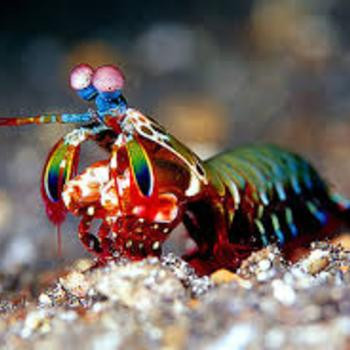How do cell walls differ among bacteria, fungi, and plants?
1 Answer
Plant cell walls are made of cellulose, fungal cell walls of chitin and bacterial cell walls of peptidoglycan.
Explanation:
All cell walls serve the sea general purpose but might do this using different materials. The purpose of a cell wall is to give the cell a definite shape, structure and to protect it from osmotic pressure changes.
In a plant cell fibres are cross linked to make a sturdy, flexible mesh. The main fibre in the cell wall is cellulose which are cross linked with hemicellulose and pectin , which you might have heard of as an ingredient meant to solidify jams into a gel like consistency.
In the image above the primary cell wall is shown but mature plant cells will also have a secondary cell wall . The primary cell wall is meant to be extended, it is flexible and stretchy as well as tough. The cell reaches a point where it does not need to grow any more and starts to deposit a secondary cell wall, also made of cellulose but with the added component called lignin , to the inside of the primary cell wall. Lignin is a fibre that makes the cell wall hard, it is found in woody stems.
To read more about the structure of plant cell walls follow the link below:
Molecular Biology of the Cell. 4th edition. Alberts B, Johnson A, Lewis J, et al. New York: Garland Science; 2002.
There are many types of bacteria, most have cell walls, they tend to be arranged in categories since it is harder to define a species of bacteria. The main groups include but are not limited to gram positive and gram negative. This refers to a stain that is commonly used to see bacteria under a light microscope. The main ingredient in the cell wall is peptidoglycan or murein which is a complex made of sugars and amino acids arranged in a mesh.
As you can see in the image below the difference between different bacterial cell walls has to do with lipoproteins arranged around it, the number of peptidoglycan layers. In the case of gram positive bacteria they have an added cell membrane outside the cel wall, which gram negative do not. Mycobacterial have an added layer outside the cell wall of arabinogalactan and mycelia acids, hence the name.
To read more about bacterial cell wall structure follow the link below:
Microbiology. Chapter 4 Bacteria: Cell Walls by Linda Bruslind
Fungi on the other hand have cell walls made of a protein call Chitin (pronounced kitin) with added layers of beta-glucan and Manno-proteins as shown in the image above.
To read more about the structure of fungal cell wall follow the link below:
Mycology, structure and function, cell wall

